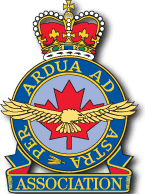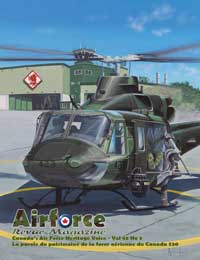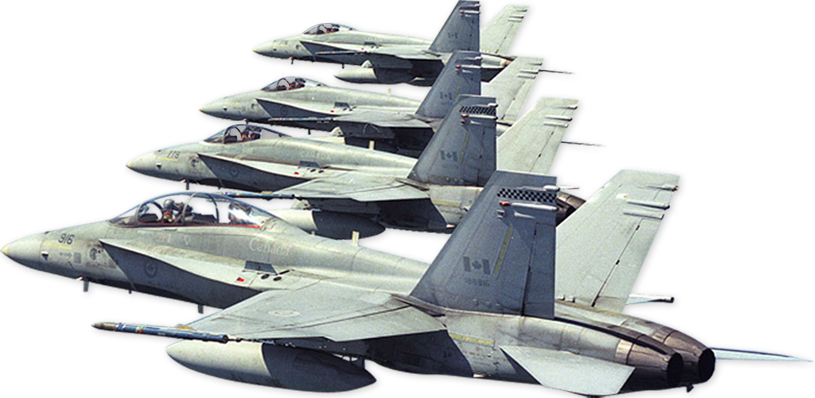RCAFA POSITION PAPER 01/2018
Issue: RCAF Personnel Challenge
Background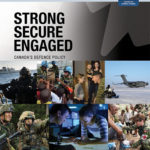
● The Government of Canada released its Strong, Secure, Engaged (SSE) policy
document in June 2017. As part of its goal to renew and strengthen the Canadian Armed
Forces (CAF), the Government has stated its intention to grow the Regular Force from
an authorized level of 68,000 to a revised level of 71,500 members. Similar increases in
the Reserve Forces are expected, going from 28,500 (revised levels in FY15/16) to
30,000 members, under the new policy. Although these planned increases are certainly
welcome, and are needed to support the level of ambition expressed in SSE, it is also
clear that this projected growth will pose significant challenges. The CAF is still
struggling to reach the goals set in 2008/2009 and is currently about 2,000 short of the
68,000 Regular Force target. As for Reservists, the shortfall to reach the 28,500 target is
about 5300. If one adds in the new SSE policy goals, these personnel gaps grow to
5,500 for the Regular Force and 6,800 for the Reserves.
● An enduring challenge for the CAF has been its inability to meet intake targets and to
train and retain sufficient numbers of personnel to offset releases due to retirement or
other reasons. Today, the CAF has to compete with the commercial sector for a new
generation of workers, as ‘baby boomers’ retire at an increasing rate, and also adapt to a
new generation of people that may not be focused on a lifetime career in the military.
The current CAF recruiting and training system has seen increased resourcing of late,
and is ramping-up to try to deal with attrition and the demand to grow the Forces.
However, this will be a very slow process and, even assuming no downward revisions to
DND’s budget, will take many years to achieve.
● The reasons for increased attrition within the CAF are numerous and have been
discussed by the CDS on many occasions. In recognition of the challenges ahead, within
the SSE strategy, the Government has placed an unprecedented focus on military
members and their families and identified a long list of initiatives aimed at improving
recruitment, retention, transition to release, health, welfare, family support and other
services.
● Like the rest of the CAF, the RCAF is affected by the same factors which generally drive
overall personnel attraction, retention and release. Although the list of factors is
extensive and inter-connected, they can be aggregated into several broad categories:
career/employment management (largely relating to career/family balance, regional
stability, etc.); operational tempo (linked to personnel shortages, the continuing need to
support missions, individual training, etc.); and the retention culture (terms of service,
compensation, Reserve employment options, etc.).
● The CAF manages about 100 trades or occupational fields with the RCAF responsible
for 26 of these. Recent numbers indicate that 10 of the RCAF managed occupations are
in the ‘red’, i.e. 10% or more under Preferred Manning Levels (PMLs). While this
proportion of red trades has existed for at least the past 10 years, the last few years
have seen a worsening situation develop in several critical areas. This situation will need
to be addressed aggressively if the RCAF is to maintain current readiness goals and
achieve the enhanced levels expressed in the SSE. 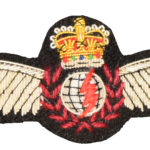 For example, the Air Combat
For example, the Air Combat
Systems Officers (ACSO) and Airborne Electronic Sensor Operator (AESOP) trades are
approximately 20% below PML while the Pilot trade is around 16% below PML.
● Although there has been considerable effort expended to improve these low numbers,
the fact remains that the RCAF is losing key personnel to the civilian sector faster than
they can be replenished. As an example, pilot attrition over the last few years has been
around 100 per year while pilot production has only averaged 95 per year. This loss rate
is clearly problematic and will not support the current objectives found in the SSE (for
example, that of growing Canada’s fighter fleet).
● In the case of the ‘500 series’ aircraft maintenance trades, things are slightly better and
there have been some improvements in both attraction and training. Still, the
Commander of the RCAF clearly lacks the necessary policy tools and flexibility needed
to effectively deal with the broader challenges he is facing.
● Since the integration and unification of all Services into the CAF in 1968, personnel
policies have been generally produced with a ‘one size fits all’ approach and therefore
are not easily changed or adapted to deal with the problems being faced by any
particular Service. The Chief of Military Personnel (CMP) has overall responsibility for
developing personnel policies – with inputs from the Services, of course – but often the
final results do not provide the flexibility needed by Service chiefs. This is particularly
true with the employment of Reserve Forces and the current challenges associated with
retention.
● Typically, Reserve Forces serve as ‘shock absorbers’ for the three Services in that they
allow them to surge when faced with increased operational pressures or to conduct
specific missions, thus reducing the demand for Regular Force personnel. The RCAF
moved to a fully integrated Reserve Force in the 1990s, while the other Services mainly
relied on separate force structures and readiness levels for their Reserve personnel and
units. The RCAF Reserve is held to the same readiness standards as their Regular
Force counterparts and is fully integrated into Headquarters and units at all rank levels
and trades. The reason the RCAF has been able to execute this level of integration is
based on the fact that over 80% of Reserve Force personnel join after serving in the
RCAF and arrive into the Reserve Force fully trained and with decades of experience. As
a result, over the past decade the RCAF Reserve has played a key role in allowing the
RCAF to surge to meet the numerous conflicts and crises Canada has faced over the
period. Unfortunately, this operational flexibility is now eroding due to shifts in CAF
policy.
● Reserve categories and employment models can be confusing, but as they are applied
to the RCAF can be summed up as follows: Class A is part-time service (up to 12
consecutive days/month), Class B is part-time to full-time service (over 12 consecutive
days/month and beyond), and Class C is a full-time contract with established durations
to support operations (at home and overseas) as defined/designated by the CDS. Class
A pay is based on a daily rate with limited benefits, while Class B reservists are paid
85% of regular force levels with varying benefits depending on the duration of their
contract. Class C Reservists receive the same pay and benefits as regular force
members while under contract.
● As part of the drive to re-shape the future CAF, there is a strong desire to see a Reserve
Force comprised mostly of Class A members, i.e. part-time citizen soldiers (although
with some new missions assigned: Cyber; CBRN; Light Urban Search and Rescue;
Naval Security; Linguistics; direct fire, mortar and pioneer platoons; and Intelligence
Operations). Unfortunately, this construct – largely based on the Army Reserve
employment model where the majority of Reservists join without previous Service
experience – does not take into account differences found in the RCAF and RCN. This
problem is particularly evident when it comes to situations where the Services have to
use Reservists to surge to meet new operational demands or to fill key vacant Regular
Force positions. At present, any Reserve employment beyond 180 days requires special
approval from the central staff and significant bureaucratic efforts to secure approvals. In
addition, any Reserve member who is also an annuitant based on previous service – that
is anyone in receipt of a pension – faces the prospect of having to cease receiving this
money if they serve on Class B or C Reserve status. Although exceptions can be made
to this policy, the time and effort required to secure such approvals can take months and
the outcome is not particularly predictable.
● The intent of these restrictive Reserve policies is to encourage the part-time reserve
model and to reduce the expenditure of operational funds on personnel. Also, they are
meant to address the perceived issues associated with Regular Force personnel leaving,
collecting a pension and then returning to duty as full-time Reservists – ‘double-dipping’
in the vernacular. Although these concerns have to be acknowledged, one cannot ignore
the reality faced by the RCAF. Given the highly technical nature of the systems and
equipment operated by the Service, to recruit Reserve personnel off the street and train
them to be productive team members works only with a very small number of RCAF
occupations, since the costs and time associated with training for most occupations are
prohibitive. Furthermore, most RCAF installations are not close to major population
centres and therefore lack access to a sufficiently diversified technical workforce needed
to support a more traditional Reserve employment model.
● Rapid and continuing growth in the commercial aviation sector combined with the
retirement of the baby-boomer generation, a declining appeal in civilian aviation careers
(cost of training and the long road to good salaries) and changing safety regulations are
creating the potential for a significant shortfall in pilots that the airline industry is trying to
address. Associated shortages in skilled aircraft maintenance personnel are also
expected. Many recent articles have highlighted this problem, with estimates that the
demand for pilots world-wide over the next two decades will likely exceed 600,000. For
Canada, the Canadian Council for Aviation and Aerospace predicts the shortfall could be
as high as 6,000 pilots over the next 20 years and, as in the past, military personnel are
increasingly seen as part of the solution. To this end, companies are aggressively (and
successfully) seeking to hire experienced RCAF pilots.
● Continued demand by the civilian aviation market will exert increasing pressure on the
RCAF which will find its ability to compensate for such losses severely limited by both
policy and training capacity. The RCAF will also see a significant increase in its
operating costs, since newcomers generally need more resources than the experienced
pilots they replace, to achieve and maintain desired readiness standards. These costs
are not miniscule; for example, the cost to train a fighter pilot to Combat Ready Status is
approximately $7M (comparable to USAF costs). It doesn’t take complex math,
therefore, to calculate that in just the past two years the RCAF has lost about $210 M in
trained fighter pilots alone.
● Although airline hiring cycles have come in the past, they have generally been linked to
improved economic conditions. The impending problem is no longer simply tied to the
economic cycle, but also to generational population changes and increasing activity
within the aviation sector driven by global commerce and technological changes.
RCAFA POSITION
● At present, the Comd RCAF has few options when it comes to stemming attrition other
than imposing restricted release conditions for certain trades while waiting for CAF-wide
initiatives to be developed and implemented. Retention bonuses have been used in the
past with mixed results, however these have proven difficult to implement in a timely
manner because of the complexities associated with the approval process.
● Many members who release are seeking full-time employment and, given that most
RCAF locations are somewhat isolated, they tend to move away to localities that support
their civilian career ambitions. Although some remain in the local area and accept Class
A Reserve duties, most find that the part-time mission does not suit their personal
circumstances. In many cases, the RCAF would need two to three Class A Reservists to
fill one Regular Force billet that needs to be sustained, thereby exacerbating the
pressure on the limited skillsets available locally. On the other hand, predictable Class
B/C work offers have been successful in the past in retaining personnel in key areas
when they would likely otherwise have gone to the civilian market.
● In order to face this changing environment, the RCAF needs to be given greater policy
autonomy/flexibility on Reserve employment to create more appealing options for
retaining and employing trained and experienced personnel. In short, to meet immediate
needs, the RCAF needs to be able to offer releasing personnel Class B positions so they
have some degree of certainty in terms of duration and conditions. Unfortunately, the
current system does not offer this flexibility.
● The CAF is considering the potential for creating a more flexible pay and rank structure.
However, this will likely take years to develop, fund and implement. Accordingly, the
RCAFA believes the CAF needs to allow the RCAF to create some near-term retention
incentives for those trades that are significantly stressed.
MESSAGES
● CAF recruiting and retention initiatives need to be pursued with vigour to serve the short
and long-term needs of the RCAF. In the near-term, efforts must be undertaken to
protect the investment made in the skills and experience of RCAF personnel.
● Initiatives to increase retention and attract back to the RCAF individuals with valuable
qualifications should be pursued aggressively. The Comd RCAF needs to be given
greater latitude/autonomy within the current CAF Reserve employment policy for
greater use of Class B/C personnel to meet urgent RCAF manning requirements.
● Increased efforts must be undertaken to transform career management to better
accommodate personal goals and priorities (work/family balance) and provide the means
necessary to ensure long-term success in attracting and retaining talented individuals in
the CAF and RCAF.
Developed by: RCAFA Advocacy Committee
Point of Contact: andre.deschamps@airforce.ca
Date: February 2018


